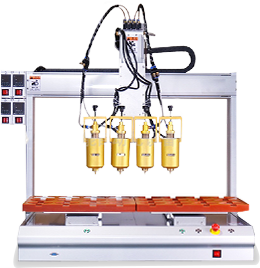

The stainless steel spline sleeve/joint, a precision automotive component, is a core component for efficient power transmission and precise positioning in the automotive transmission system. It is made of high-quality stainless steel materials such as 304 and 316L, and is made through precision processing such as CNC turning, gear hobbing, and grinding. Its main body is hollow cylindrical, with regularly distributed spline teeth on the inner or outer wall. By tightly meshing with the spline shaft, it stably transmits the rotational power of the engine and gearbox to the wheels, steering mechanism and other components.
Core advantages | Technical highlights | Application value |
High-precision transmission | Using cold precision hobbing technology, the spline tooth profile error is ≤±0.005mm, the indexing error is ≤±0.01mm, and the matching tolerance is controlled within ±0.008mm | Achieve zero-gap power transmission, ensure smooth gear shifting and precise steering, reduce transmission noise, and improve driving experience |
Super corrosion resistance | The molybdenum content of 316L stainless steel is ≥2%, the surface is passivated, and the salt spray test is more than 2000 hours without rust | Adapt to harsh environments such as coastal areas, high humidity and acid rain, extend the service life of chassis and transmission system components, and reduce maintenance costs |
High load bearing capacity | After solid solution strengthening treatment, the tensile strength is ≥700MPa, the yield strength is ≥300MPa, and it can withstand torques above 10000N・m | Meet the high-intensity power transmission requirements of heavy-duty trucks, off-road vehicles and other models, and ensure stable operation under complex working conditions |
Wear resistance and fatigue resistance | The surface is nitrided, the hardness reaches HV750 or above, and it is matched with low roughness processing (Ra≤0.4μm) | Effectively reduce friction loss, improve component fatigue resistance, and maintain excellent performance under frequent start-stop and speed change conditions |
Flexible customization | Supports personalized customization of spline type (rectangular, involute), specification (minor diameter 6-100mm), and length (20-500mm) | Adapt to the transmission systems of different brands and models of cars, and improve vehicle assembly compatibility and design flexibility |
Material and process
.Material selection:
304 stainless steel: excellent overall performance, containing 18% chromium and 8% nickel, suitable for power transmission components in general corrosive environments such as engine compartments and gearboxes.
316L stainless steel: added with molybdenum, with outstanding acid and alkali resistance and seawater corrosion resistance, commonly used in high-corrosion risk areas such as chassis and differentials.
.Processing technology: using a five-axis linkage CNC machining center, combined with precision grinding and laser detection technology to ensure spline tooth accuracy and surface quality; some products are vacuum heat treated to strengthen the internal structure and improve the overall mechanical properties.
Item | Specifications | Description |
Spline type | Rectangle, involute, triangle, etc. | Can be customized according to customer needs |
Minor diameter range | Φ6 - Φ100mm | Adapt to different shaft diameter specifications |
Tooth width range | 2 - 20mm | Meet different torque transmission requirements |
Length range | 20 - 500mm | Support customized production |
Coaxiality | ≤0.01mm | Ensure transmission accuracy |
Operating temperature | -50℃ - 180℃ | Adapt to extreme climate conditions |
Application scenarios
. Transmission system: connects the input shaft and the gear set to achieve efficient speed change and transmission of power, ensuring sensitive shift response and stable power output.
. Drive axle and differential: when the vehicle turns, coordinate the difference in wheel speed on both sides, and smoothly transmit power to the wheels, improving the vehicle's passability and maneuverability.
. Steering system: used to connect the steering column and the steering gear, accurately convert the driver's steering operation into the wheel steering angle, and improve the sensitivity and reliability of the steering system.
. New energy vehicle electric drive system: adapts to the connection between the motor rotor shaft and the reducer, meets the requirements of high speed and high torque conditions, and helps new energy vehicles achieve efficient power transmission.
 Headquarters tel.
Headquarters tel. E-mail.
E-mail.